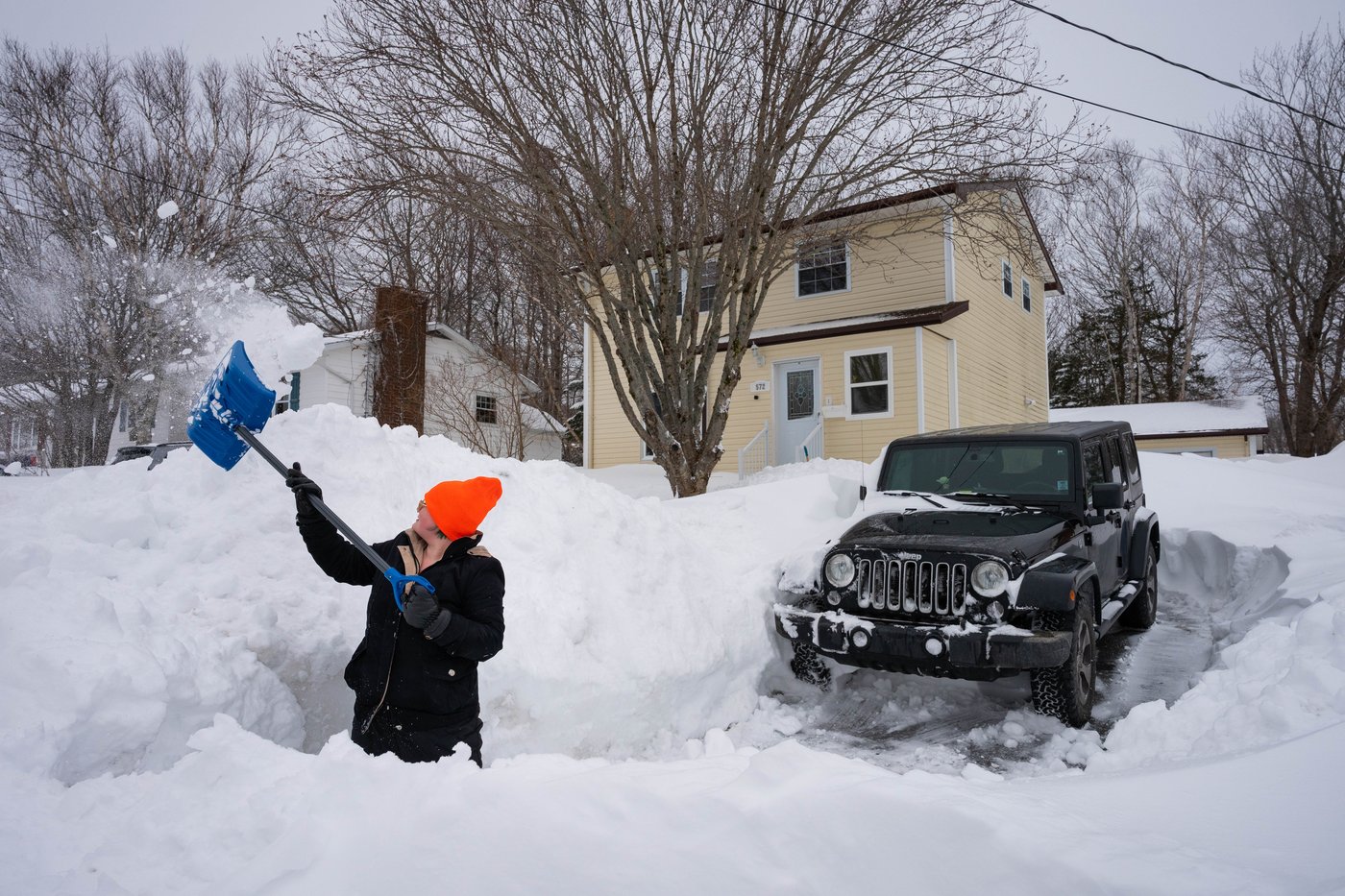
Crew rescued from Newfoundland fishing boat pushed ashore by seething winter storm
February 16, 2024
By
The Canadian Press

Kat MacIsaac, a nurse at the Cape Breton Regional Hospital’s dialysis unit, shovels out her driveway in Sydney, N.S., on Wednesday, Feb. 14, 2024. THE CANADIAN PRESS/Steve Wadden
By Sarah Smellie in St. John’s
Lights from fishing boats illuminating heavy snowfall helped guide four crew members off a teetering vessel Wednesday night that had run aground that morning in Newfoundland as a massive storm set in.
The burly nor’easter brought two days of heavy snow and high winds to parts of Nova Scotia and Newfoundland and Labrador, causing school cancellations, coastal damage and the abandonment of the Cape Cordell fishing vessel near Fortune, N.L.
“It couldn’t have been an easy decision, but it was for the safety of those on board,” said Mark Gould with the Canadian Coast Guard. “I feel like it was the right decision to abandon that vessel. The risk of staying aboard just wasn’t worth it.”
Gould and his search and rescue team spent much of Wednesday trying to wrench the 16-metre fishing boat free, but the pounding seas just pushed it further onto the shore, he said in an interview Thursday. It was after 7 p.m. by the time the crew decided to put on their immersion suits and leave the boat behind.
With the local volunteer fire department on hand, Gould said the coast guard team used ropes to help the crew members wade through the frigid water. Once they were safely ashore, they were examined by a medical team and cleared to go home.
“It was still a winter storm. Even though the tide was low and the water was low, we were still dealing with those waves,” he said.
“We were able to use lights from the shoreline and use the vessel’s lights to brighten it up, so we could do it safely.”
In St. John’s, schools were closed for a second consecutive day on Thursday, as some parts of the city dug out from more than 40 centimetres of heavy, wet snow. Between five and 15 cm more were expected to fall on Thursday.
“It definitely takes a while to clean up, especially in the places that got the higher amounts,” said Tiffany Cheeks, a meteorologist with Environment Canada.
High winds were blowing snow around in some parts of eastern Newfoundland, making driving conditions difficult, she said, adding that gusts were clocked in the Bonavista area on Wednesday at 115 kilometres an hour. Police closed a rural highway outside St. John’s on Thursday morning because of treacherous conditions.
Further south, the ocean plowed over parts of the large wooden fence, or breakwater, erected to keep the tides at bay in Trepassey, N.L. The town council urged residents Thursday morning to stay away from the damage, noting that the road nearby was covered in debris.
In central Newfoundland, the Gander area was hit particularly hard on Wednesday, with 49 cm of snow recorded at the town’s airport.
Winter storm warnings remained in place for the island’s Bonavista and northern Avalon peninsulas, and the Gander region on Thursday. Environment Canada asked residents around Gander to brace for up to 75 cm of snow by early Friday. Bonavista and St. John’s would likely see between 40 cm and 60 cm.
Residents should postpone travel if they could, and stay off the roads, the weather agency said.
About 50 cm of snow was expected by Saturday or early Sunday along Labrador’s north coast, from Postville to Makkovik. Cheeks said up to 100 cm could fall in the region’s inland areas.
Meanwhile, the same low-pressure system that brought so much foul weather to Newfoundland and Labrador unloaded on parts of Nova Scotia for a second day.
Schools were closed across Cape Breton and much of the province’s eastern mainland as northwesterly winds gusting at 70 km/h reduced visibility in Pictou and Antigonish counties, where another 10 cm of snow was in the forecast.
In Cape Breton, a winter storm warning ended Thursday afternoon for Inverness County, on the west side of the island, where another 10 to 20 cm of blowing snow was expected. “There may be a significant impact on rush hour traffic in urban areas,” Environment Canada said.